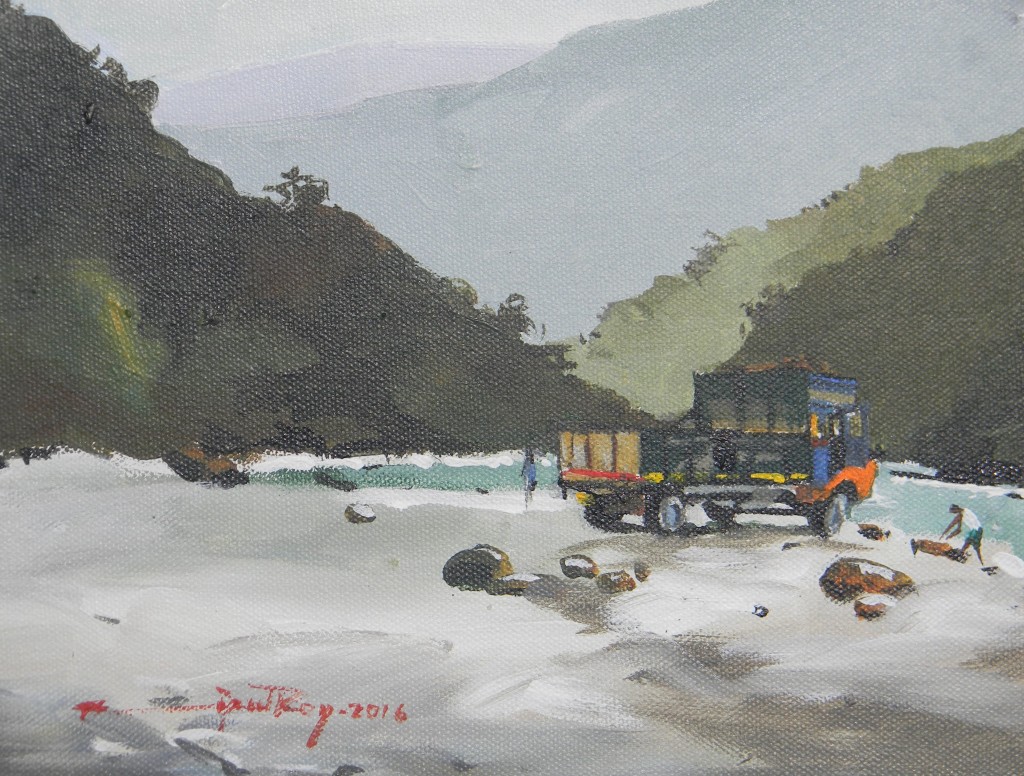Indian paintings are indisputably India’s pride. Their remarkable history holds treasures for people to appreciate and adore. Some of the earliest Indian paintings are done in the form of Parietal art or rock paintingwhich can be seen in places like Bhimbetka. Apart from this, one cannot deny the mesmerismthat is present in the paintings of Ajanta and Ellora Caves that were created by Buddhist Monks. These are generally considered to be from 5500 BC.The art that now ornaments every place, walls of homes and offices was previously ignored as primitive form of expression.
After the 20th century, some great scholars like Arabindranath Tagore and other began their research and brought a new art style in practice which was influenced by Indian art form. This art form praised the value of Indian folk paintings.
In the 1st century BC, India art was introduced to the six prime principles of the art, known as ‘Shadanga’ or the ‘Six Limbs’ of painting. These limbs were actually six different points which emphasized what all artists needed to infuse in their artworks to achieve greater effect and appeal. Let’s explore more about the ‘Six limbs’ in the form of a shloka that have modified Indian art all these years:
“Roopabhedahpramananibhava-Lavanya-yojanam |
Sadrishyam varnakabhangam iti chitram shadakam ||”
- Rupa-bheda(multiplicity of form): Rupa is a Hindi word which means ‘beauty’ or ‘form’whereas Bheda is a word of Sanskrit origin which mean ‘distinction’ or ‘difference’. Rupa-bheda basically imparts knowledge about understandingthe special characteristics of things –living or non-living; say, thedifferences in appearancesof subjects of thepainting.The study and practice of Rupa-bhedaenable us to see and depicts things as they are and as they appear visually.
- As Indian Paintings entails a number of themes, like ancient tradition, culture, and heritage, it becomes crucial to understand- How to depict the subject of the painting in its true form? And, this can be done by analyzing the forms given to us by our five senses, our soul, and mind.
- Pramanam(proportion): Pramāṇa is the word derived from the Sanskrit root, which means acquiring true knowledge. With reference to Indian philosophy, it is something by which one can obtain accurate or near accurate knowledgeabout the world. In the field of Art, Pramanaassists us to recognize significantaspects ofa painting. It also helps us to find the true subject of the painting whereas, for the artist, it’s a way to bring out the accurate perception, measure, and structure in the painting. Parmana provides a means to maintain a balancewithin the figure and also in its relation to other figures; and to the painting as a whole.
- Bhava(Disposition of feelings): Many Indian paintings depict human figures where their facial expressions play a significant role. Bhava is a technique which helps an artist to understand and paint the exact facial expressions or state of mind, which is translated as feeling, emotion or devotion as the artist create emotional energies through paintings. It won’t be an exaggeration to say that Bhava gives meanings to Indian paintings by giving them an expression of character which fulfills the meaning of the painting.
- Lavanya-Yojanam(Grace in Art): Lanvanya-Yojanam is the word with Sanskrit origin, which means ways to infuse grace in the piece of art. It adds a touch of panache to upsurge the beauty of Indian paintings. Itnot only enhances the beauty of the character but also adds grace to the environment. Lanvanya-Yojanam enables artists to showcase the beauty that can be rendered and felt inthe appearance of their work.
- Sadrishyam(Similitude):Sadrishyam means the recognition of an actual form and creating it exactly same or similar to the real form or idea, i.e. a peacock painting should look like a painting of a peacock, and not like that of any other bird or animal.
- Varnikabhanga(Color Scheme): It’s a technique that had been practiced by the artisans for ages. It tells them theright artistic manner of using the brush and colors as they lend soul to mesmerizing Indian paintings. In the hands of a prominent artist, even ordinary colors pronounce extraordinary exuberance because beauty is not in the colors; it’s because of the way they are used in the painting.
These six limbs are still being practiced by Indian artists.
